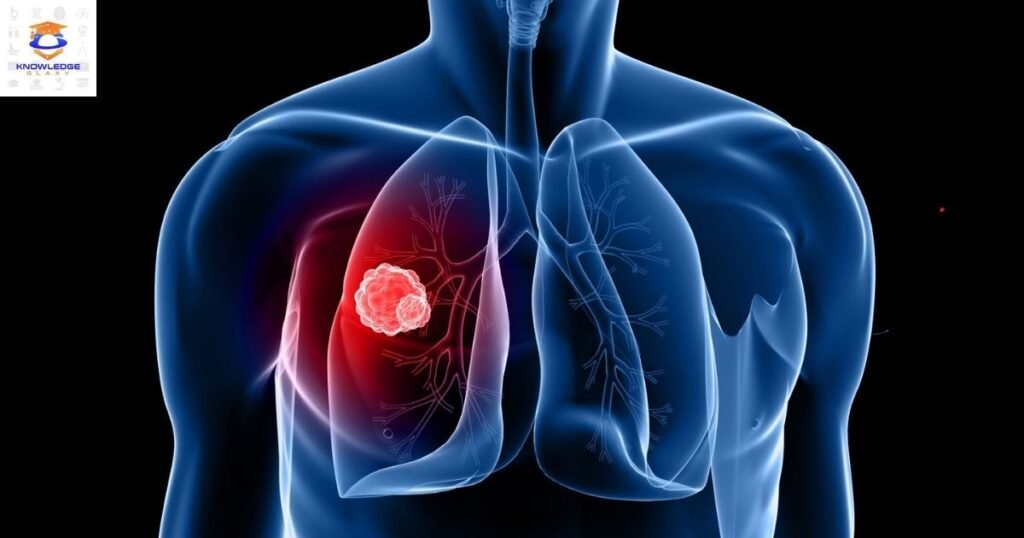Lung cancer is a leading cause of cancer-related deaths worldwide. It is often diagnosed at advanced stages, when treatment options are limited and the chances of survival are low. However, lung cancer screening can help identify the disease at an earlier stage, when it is more treatable.
Lung cancer screening involves using imaging tests to look for signs of the disease in people who may be at high risk but do not have any symptoms. The two main types of lung cancer screening tests are low-dose computed tomography (LDCT) and sputum cytology.
Read More: Pancreatic Cancer

LDCT uses a special type of X-ray machine to take detailed pictures of the lungs. The test is quick and painless, and it exposes the patient to a lower dose of radiation than a standard CT scan. LDCT is recommended for people who are at high risk for lung cancer, such as current or former heavy smokers.
Sputum cytology involves examining a sample of mucus and other substances coughed up from the lungs under a microscope. This test can be used to look for abnormal cells that may be a sign of lung cancer.
Lung Cancer Screening Cacues
Lung cancer screening is generally recommended for people who are at high risk for the disease due to their age, smoking history, and other factors. However, it is important to talk to a healthcare provider about the potential risks and benefits of lung cancer screening, as well as whether it is right for you.
If lung cancer is found early through screening, it is more likely to be treated successfully. Treatment options may include surgery, chemotherapy, radiation therapy, or a combination of these approaches. It is important to discuss all treatment options with a healthcare provider and to consider factors such as the stage of the cancer, the patient’s overall health, and their personal preferences.
In conclusion, lung cancer screening can help identify the disease at an early stage, when it is more treatable. While it is generally recommended for people at high risk for the disease, it is important to discuss the potential risks and benefits with a healthcare provider and to consider all treatment options if the disease is detected.
Lung cancer is the leading cause of cancer-related deaths worldwide. It is a type of cancer that starts in the lungs and can spread to other parts of the body. The most common type of lung cancer is called non-small cell lung cancer (NSCLC), which makes up about 80-85% of all cases. Small cell lung cancer (SCLC) is less common and tends to grow and spread more quickly.
Screening for lung cancer involves using tests to look for the disease before symptoms appear. The goal of lung cancer screening is to find the disease at an early stage, when it is more likely to be curable. However, lung cancer screening is not recommended for everyone and has potential risks and limitations.

Who should be screened for lung cancer?
Lung cancer screening is generally recommended for people who are at high risk for the disease. This includes people who are:
- 55 to 74 years old
- Currently smoking or have quit within the past 15 years
- In good health with a life expectancy of at least 10 more years
People who meet these criteria and have a 20 pack-year or greater smoking history (meaning they have smoked the equivalent of a pack of cigarettes per day for 20 years) are considered to be at the highest risk and are likely to benefit the most from screening.
What tests are used for lung cancer screening?
The most common test used for lung cancer screening is low-dose computed tomography (LDCT), also known as a low-dose CT scan. This test uses a low dose of radiation to produce detailed images of the lungs. It is quick, painless, and generally well tolerated.
Other tests, such as chest X-rays and sputum cytology (examination of cells in phlegm), may also be used for lung cancer screening. However, these tests are less sensitive than LDCT and are not as effective at finding early-stage lung cancer.
What are the risks and limitations of lung cancer screening?
Like any medical test, lung cancer screening has potential risks and limitations. One risk is the possibility of false-positive results, which means the test suggests cancer is present when it is not. This can lead to unnecessary anxiety and further testing, such as biopsies, which carry their own risks.
Another risk is the possibility of false-negative results, which means the test fails to detect cancer that is present. This can lead to a false sense of security and delay in diagnosis and treatment.
Lung cancer screening is not recommended for everyone and may not be appropriate for those who are at low risk for the disease or have certain health conditions that make the test unsafe. It is important to discuss the risks and benefits of lung cancer screening with a healthcare provider to determine if it is right for you.
Read More: Lung Cancer Screening

Conclusion
Lung cancer screening can help find the disease at an early stage, when it is more likely to be curable. However, it is important to understand that lung cancer screening is not recommended for everyone and has potential risks and limitations. It is essential to have a conversation with a healthcare provider about the risks and benefits of lung cancer screening to determine if it is appropriate for you.






